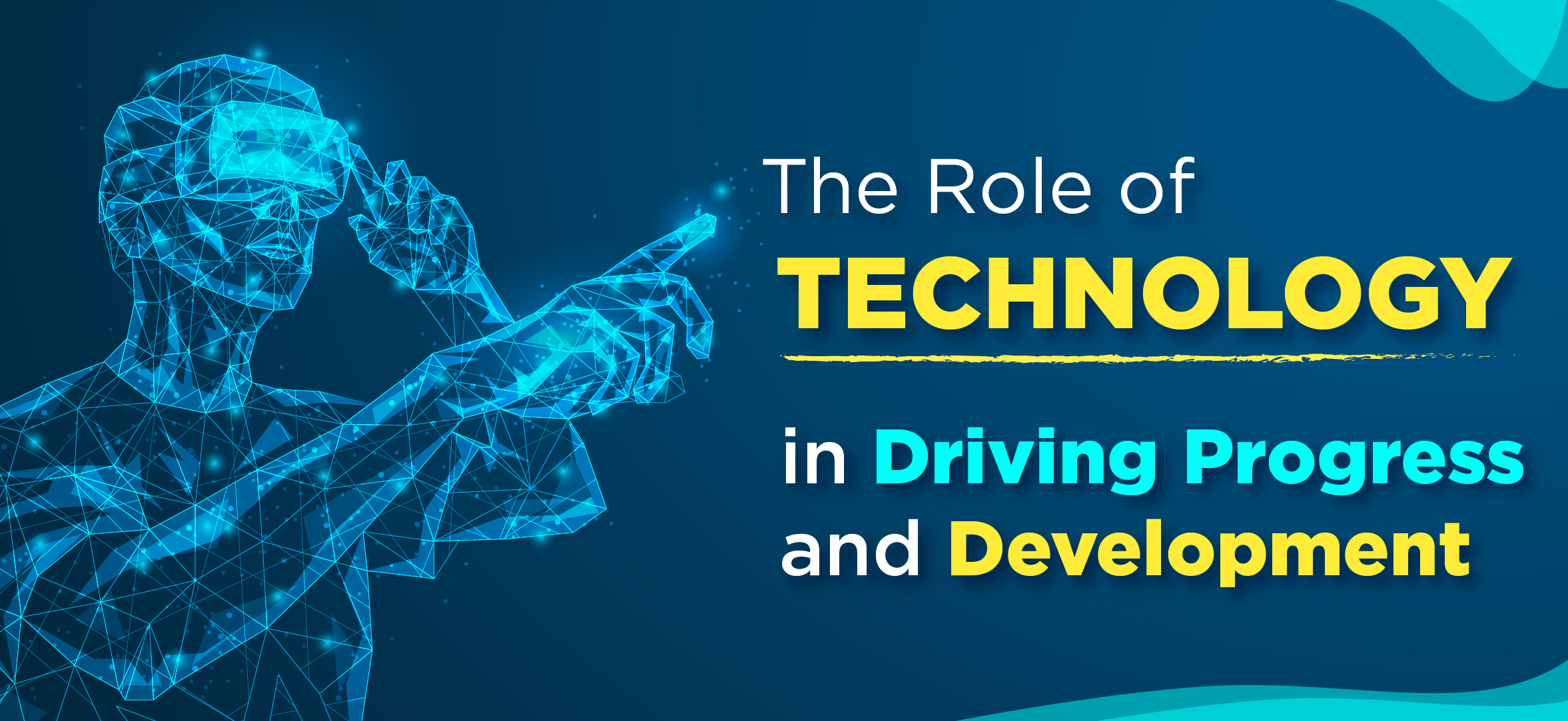The Role of Technology in Driving Progress and Development
Blogs Home
- 11 May 2023

In this era of 2023, it's hard to imagine life without technology. Whether we want to make a quick call from smartphones or update an event status on social media, we couldn't have done it without the high technology we are blessed with today. It has become an integral part of our daily routine. But did you know that technology has also revolutionized various industries? That's right! Due to the power of technology, industries have been transformed in ways that were once unimaginable. From healthcare to finance, and agriculture education, technology has transformed the way we work and live, bringing convenience, efficiency, and innovation to every aspect of our lives. So, let us explore the exciting ways that technology has helped shape some of the world's most significant industries.
Advancements in Healthcare Technology
There are uncountable instances where technology has brilliantly transformed the healthcare system. Medical technologies such as X-rays, CT scans, and MRIs have revolutionized the way we diagnose and treat diseases. It helps doctors to see inside the human body without the need for invasive procedures, making diagnosis quicker and less painful. Also, the development of medical robots and telemedicine has made healthcare more accessible, especially in remote areas where healthcare facilities are limited. Now patients can get medical consultations and treatment from the comfort of their own homes, reducing the need for travel and wait times.
Electronic health records (EHRs) have enabled doctors to access patient records quickly, allowing for more accurate diagnoses and better patient care. EHRs also facilitate communication between healthcare providers, enabling them to work together to provide the best possible care for their patients.
Online Learning and Education Technology
Online resources, such as e-books, podcasts, and video lectures, have made education easily available to students. Due to the development of online learning platforms and virtual classrooms, they can learn from anywhere in the world. People living in remote areas who rarely get opportunities greatly benefit from this.
The all-time availability and convenience let students pause, rewind, and repeat lessons as often as possible until they are sure about the concept. The personalized learning experience has improved learning outcomes and student engagement to a massive extent. Also, the use of technology in classrooms, such as interactive whiteboards and educational software, has made learning more engaging and interactive for students.
Wearable Technology and Communication
Wearable technology is a category of electronic devices that are designed to be worn on the body, either as an accessory or as a part of clothing. These devices often include sensors and other advanced technology that can monitor and track various aspects of the wearer's health and fitness, as well as provide information or assistance with daily tasks. It can be in the form of smartwatches that can make calls and send texts to fitness trackers that can monitor heart rate and calorie burn.
Social media platforms, such as Facebook and Twitter, have made it easier for people to connect with each other, share information, and form communities. Because of this, now it's easier for businesses to reach their target customers. Also, one can connect with like-minded people with much ease now, as many platforms have community-driven features. The development of video conferencing technologies, such as Zoom and Skype, has made it easier for people to communicate with each other, regardless of their location. This has enabled businesses to conduct meetings with remote employees and for families to stay in touch with loved ones who live far away.
Technology and Sustainable Energy
Current and advanced technology has the potential to significantly reduce our environmental impact by enabling the development of renewable energy sources and reducing waste and emissions. Renewable energy sources such as solar, wind, and hydropower can replace traditional energy sources that generate harmful emissions, contributing to climate change. The adoption of renewable energy technologies has increased in recent years, with countries setting targets to reduce carbon emissions and shifting towards renewable energy sources. More energy-efficient buildings, transportation systems, and manufacturing processes, have also been developed.
The Impact of Technology on the Global Economy
Technology has massively helped, particularly in creating new industries and employment opportunities. The development of the latest tech-rich products and services, such as smartphones, social media platforms, and e-commerce platforms, has transformed how we live and work. Many job or study opportunities can be found on these platforms. Also, these are great sources to market and expand the business.
Accessibility for Individuals with Disabilities
With the help of technology, various services are more accessible to people with disabilities, greatly improving their quality of life and helping them participate more in society. For example, text-to-speech software and screen readers enable visually impaired individuals to access written content, while hearing aids and cochlear implants improve the hearing of those with hearing impairments. Assistive technologies, such as motorised wheelchairs and prosthetics, enable individuals with physical disabilities to move around and perform daily tasks with greater ease.
Personalized Marketing and Targeted Advertising
The development of personalized products and services has progressed in efficiency and customer satisfaction. Consider how personalized medicine uses genetic information to develop individualized treatment plans based on a patient's needs and characteristics. Targeted advertising uses data analysis to deliver personalized ads to consumers, based on their preferences and interests. In both cases, technology has enabled a more personalized approach, which can improve outcomes and enhance the user experience.
The Importance of Big Data in Decision Making
Big data and analytics have revolutionized how organizations make decisions, leading to improved outcomes and increased efficiency. Now healthcare providers can use data analytics to predict patient outcomes and identify potential health risks, enabling them to provide more personalized and effective care. Businesses can use data analytics to identify trends and patterns in customer behavior, helping them develop more effective marketing strategies and improve customer satisfaction. Furthermore, data analysis has enabled the development of new technologies, such as self-driving cars and predictive maintenance systems, which rely on complex algorithms and machine learning.
Disruptive Technology and Innovation
Many significant innovations in entertainment, gaming, transportation, and medicine have occurred lately. Virtual and augmented reality technologies have enabled new entertainment and immersive experiences. At the same time, the development of electric cars and hyperloop transportation systems has the potential to revolutionize how we travel. In medicine, technology has helped in areas such as genomics and precision medicine, leading to more personalized treatment options and improved health outcomes. It has also helped develop new materials and manufacturing processes, which can improve efficiency and reduce waste.
The Future of Technology and Progress
Technology has increased efficiency in various fields, such as manufacturing and agriculture. The use of automation, robotics, and machine learning has significantly improved productivity, reduced costs, and increased output.
As technology continues to advance, we can expect even more noteworthy improvements in various areas of human life. For example, the development of artificial intelligence (AI) can transform healthcare, enabling doctors to make more accurate diagnoses and create personalized treatment plans for their patients. Or the development of autonomous vehicles can reduce traffic accidents and improve transportation efficiency.
However, it is essential to recognize technology's potential risks and challenges, such as privacy concerns and job displacement. It is crucial to work to mitigate these risks as we continue to harness the power of technology to drive progress and development.
Poonam Sharma
Poonam Sharma is a graduate in civil engineering. She is an old soul who loves music, dance, and art! Apart from these, she likes to immerse herself in writing, singing and sketching; this is how she expresses art.





